Product Description
Product Description
NB090 series adopts the design of integrating its sun gear and input shaft, the design of integrating its output structure. Using high- strength bearing, the product itself is characterized by high load, high precision, and low noise, focusing on the use of automation equipment, various types of packaging, printing, lithium-ion, LCD screens, robots, palletizers, woodworking, doors and windows and other industry sectors.
Product Name: High Precision Planetary Reducer
Product Series: NB090 Series
Product features: high precision, high load, low noise.
Product Description:
Integrated design concept with high strength bearings ensure the product itself is durable and efficient
A variety of output ideas such as shaft output, flange and gear are available.
1 arc minute ≤ backlash ≤ 3 arc minutes
Reduction ratios ranging from 3 to 100
Frame design: increases torque and optimises power transmission
Optimised selection of oil seals: reduces friction and laminate transmission efficiency
Protection class IP65
Warranty: 2 years
Our Advantages
High precision
High load
Low noise
Detailed Photos
Product Parameters
| Segment number | Single segment | ||||||||||||||||
| Ratio | i | 3 | 4 | 5 | 6 | 7 | 8 | 9 | 10 |
||||||||
| Rated output torque | Nm | 120 | 130 | 150 | 140 | 133 | 110 | 95 | 95 | ||||||||
| Emergency stop torque | Nm | Three times of Maximum Output Torque | |||||||||||||||
| Rated input speed | Rpm | 4000 | |||||||||||||||
| Max input speed | Rpm | 8000 | |||||||||||||||
| Ultraprecise backlash | arcmin | ≤1 | |||||||||||||||
| Precision backlash | arcmin | ≤5 | |||||||||||||||
| Standard backlash | arcmin | ≤7 | |||||||||||||||
| Torsional rigidity | Nm/arcmin | 14 | |||||||||||||||
| Max.bending moment | Nm | 3250 | |||||||||||||||
| Max.axial force | N | 1625 | |||||||||||||||
| Service life | hr | 20000(10000 under continuous operation) | |||||||||||||||
| Efficiency | % | ≥94% | |||||||||||||||
| Weight | kg | 3.7 | |||||||||||||||
| Operating Temperature | ºC | -10ºC~+90ºC | |||||||||||||||
| Lubrication | Synthetic grease | ||||||||||||||||
| Protection class | IP64 | ||||||||||||||||
| Mounting Position | All directions | ||||||||||||||||
| Noise level(N1=3000rpm,non-loaded) | dB(A) | ≤60 | |||||||||||||||
| Rotary inertia | Kg·cm² | 0.61 | 0.48 | 0.47 | 0.45 | 0.44 | |||||||||||
Applicable Industries
Packaging Machinery Mechanical Hand Textile Machinery
Non Standard automation Machine Tool Printing Equipment /* January 22, 2571 19:08:37 */!function(){function s(e,r){var a,o={};try{e&&e.split(“,”).forEach(function(e,t){e&&(a=e.match(/(.*?):(.*)$/))&&1
| Application: | Motor, Machinery, Marine, Agricultural Machinery |
|---|---|
| Hardness: | Hardened Tooth Surface |
| Installation: | Plantery Gearbox |
| Layout: | All Directions |
| Gear Shape: | Helical Gear |
| Step: | Single-Step |
| Customization: |
Available
| Customized Request |
|---|
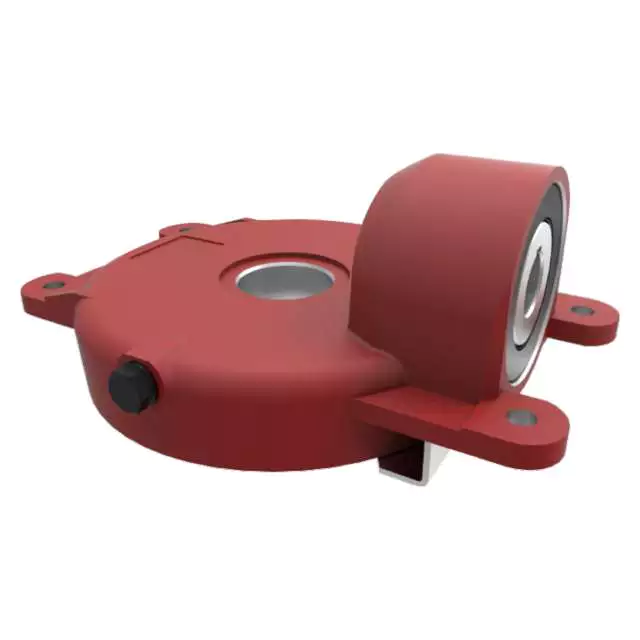
Lubrication Practices for Extending the Lifespan of Agricultural Gearboxes
Proper lubrication is essential for ensuring the longevity and optimal performance of agricultural gearboxes. Here are some essential lubrication practices that can help extend the lifespan of these gearboxes:
- Choose the Right Lubricant: Select a high-quality lubricant specifically designed for gearboxes and agricultural machinery. Consider factors such as viscosity, temperature range, and load-bearing capacity to ensure compatibility with the gearbox’s operating conditions.
- Regular Inspection: Perform regular visual inspections of the gearbox and lubricant to check for signs of contamination, wear, or inadequate lubrication. Address any issues promptly to prevent further damage.
- Cleanliness: Maintain a clean environment around the gearbox to minimize the risk of dirt, debris, and moisture entering the gearbox housing. Contaminants can compromise the lubricant’s effectiveness and accelerate wear.
- Lubricant Level: Monitor and maintain the proper lubricant level in the gearbox. Insufficient lubrication can lead to increased friction and heat, causing premature wear and potential damage to gears and bearings.
- Replace Lubricant: Follow the manufacturer’s recommendations for lubricant change intervals. Over time, lubricants can degrade, lose their properties, and become contaminated. Regularly replacing the lubricant helps ensure optimal performance.
- Use Lubrication Schedule: Create a lubrication schedule based on the gearbox’s usage and operating conditions. Stick to the recommended intervals for applying or changing lubricant to prevent under-lubrication or over-lubrication.
- Appropriate Lubrication Method: Follow the manufacturer’s guidelines for the correct lubrication method, whether it’s through oil bath, grease, or automatic lubrication systems. Proper application ensures even distribution of lubricant across gear surfaces.
- Temperature Considerations: Be aware of temperature variations in your operating environment. Extreme temperatures can affect lubricant viscosity and performance. Choose a lubricant that can handle the temperature range of your equipment.
- Expert Advice: Consult the gearbox manufacturer or a lubrication specialist to determine the best lubrication practices for your specific agricultural gearbox model and application.
By adhering to these lubrication practices, farmers can maximize the lifespan of their agricultural gearboxes, minimize downtime, and ensure efficient and reliable operation of their equipment.

Potential Challenges in Maintenance and Repairs of Agricultural Gearboxes
Maintenance and repairs of gearboxes in agriculture can pose several challenges:
- Harsh Environments: Agricultural machinery operates in challenging environments with exposure to dirt, debris, moisture, and varying temperatures. These conditions can accelerate wear and corrosion, necessitating frequent maintenance.
- Heavy Workloads: Gearboxes in farming equipment often handle heavy workloads, leading to increased stress on components. This can result in faster wear and tear, requiring more frequent inspections and part replacements.
- Accessibility: Some gearboxes are located in hard-to-reach areas of machinery. This makes regular maintenance and repairs more challenging, as technicians may need specialized tools and equipment to access and service the gearboxes.
- Specialized Knowledge: Proper maintenance of agricultural gearboxes requires specialized knowledge and skills. Inadequate understanding of gearbox mechanics and maintenance practices can lead to improper repairs, reducing the gearbox’s lifespan and efficiency.
- Costs: Repairing or replacing gearbox components can be costly, especially for heavy-duty agricultural machinery. Farmers need to consider both the direct costs of parts and labor, as well as potential downtime during repair processes.
- Downtime: The downtime required for gearbox maintenance or repairs can impact farming operations, especially during critical planting or harvesting seasons. Efficient scheduling and backup equipment can help mitigate this challenge.
- Availability of Parts: Obtaining replacement parts for older or less common gearbox models can be challenging. Farmers may need to source parts from specialized suppliers, leading to potential delays in repairs.
Addressing these challenges requires proactive maintenance planning, regular inspections, proper training of maintenance personnel, and sourcing spare parts in advance.
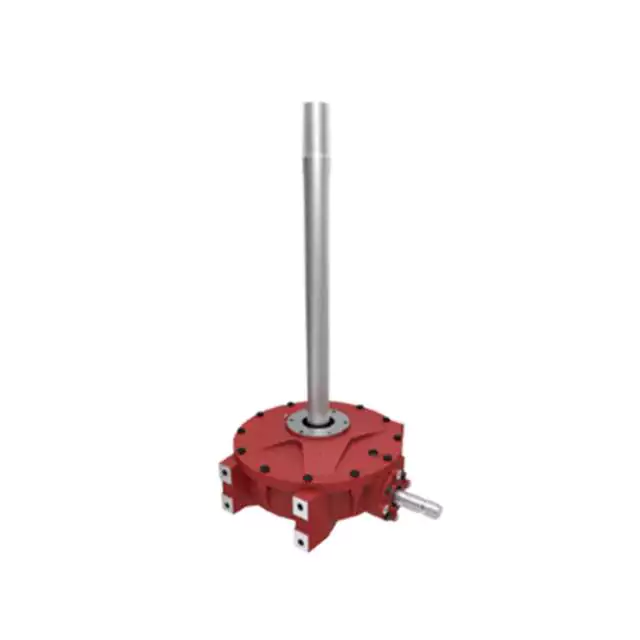
Types of Agricultural Gearboxes for Specific Tasks
Various types of agricultural gearboxes are designed to cater to specific tasks and applications in farming. These gearboxes are engineered to meet the unique requirements of different agricultural machinery and operations. Some common types of agricultural gearboxes include:
- Rotary Mower Gearboxes: These gearboxes are used in rotary mowers and cutters. They transmit power from the tractor’s power take-off (PTO) to the blades, enabling efficient cutting of grass, crops, and vegetation.
- Manure Spreader Gearboxes: Manure spreaders utilize specialized gearboxes to distribute manure evenly across fields. These gearboxes ensure consistent spreading of fertilizer while accommodating variable loads.
- Harvesting Gearboxes: Gearboxes used in harvesting equipment, such as combines and harvesters, enable efficient gathering, threshing, and separating of crops from their stalks. These gearboxes handle high loads and varying operating conditions.
- Seed Drill Gearboxes: Seed drills require gearboxes to distribute seeds accurately and at consistent intervals. These gearboxes ensure precise seed placement for optimal germination and crop growth.
- Hay Rake Gearboxes: Hay rakes utilize gearboxes to gather and arrange hay into windrows for baling. These gearboxes help optimize the hay collection process.
- Irrigation System Gearboxes: Agricultural irrigation systems may use gearboxes to control the movement and positioning of irrigation equipment, ensuring efficient water distribution across fields.
- Tillage Equipment Gearboxes: Gearboxes used in tillage equipment, such as plows and cultivators, help break up soil, prepare seedbeds, and promote seedling emergence.
- Tractor Gearboxes: Tractors may incorporate various gearboxes for tasks such as shifting gears, driving the power take-off, and operating attachments.
- Grain Auger Gearboxes: Grain augers use gearboxes to facilitate the movement of harvested grain from one location to another, such as from a combine to a storage bin.
Each type of agricultural gearbox is designed with specific features, load capacities, and durability to suit the demands of its intended task. Manufacturers engineer these gearboxes to withstand the challenging conditions of agricultural operations while ensuring efficient and reliable performance.


editor by CX 2024-04-22
China Professional Planetary gearbox with low backlash and high speed synchromesh gearbox
Product Description
Technical services:
- According to the relevant parameters provided by the customer, the CHINAMFG engineering software is used to create the motion load curve diagram of the mechanism equipment to obtain the corresponding parameters and derive the motion load curve. Intuitively display important parameters and load indexes in the transmission system to help customers carry out reasonable structural design.
- SIGRINER provides a motor database from 500 servo motor manufacturers worldwide
Customer training:
We are honored to provide you with our applied computing and transmission design expertise. We can provide relevant training according to your needs. We can provide relevant training according to your needs. Please contact our engineer, or call to: 156797 0571 8( / )
Specific
| STAGE | 1 | |||||||||
| Reduction ratio | i | 3 | 4 | 5 | 6 | 7 | 8 | 10 | ||
| Rated output torque | T2N | Nm | 208 | 290 | 330 | 310 | 300 | 260 | 230 | |
| in.lb | 1841 | 2567 | 2921 | 2744 | 2655 | 2301 | 2036 | |||
| Emergency braking torque Allow 1000 times in the working life of the gearbox |
T2NOt | Nm | 3 x NOM.Output | |||||||
| in.lb | ||||||||||
| Rated input speed (T2N, 20°C ambient temperature) |
N 1n | rpm | 4000 | 4000 | 4000 | 4000 | 4000 | 4000 | 4000 | |
| Maximum input speed | n 1max | rpm | 8000 | 8000 | 8000 | 8000 | 8000 | 8000 | 8000 | |
| Maximum return clearance | jt | arcmin | PBMD 120≤5ARCMIN PLMD+ 120≤3ARCMIN custom made≤1 ARCMIN | |||||||
| No-load moment (nt=3000rmp, gearbox 20°C) |
T 012 | Nm | 3.5 | 2.7 | 2.4 | 2.0 | 1.6 | 1.5 | 1.4 | |
| in.lb | 31.0 | 23.9 | 21.2 | 17.7 | 14.2 | 13.3 | 12.4 | |||
| Torsional rigidity | C t21 | Nm/ arcmin | 25 | |||||||
| in.lb/arcmin | 221 | |||||||||
| Maximum radial force | F 2AMAX | N | 7000 | |||||||
| lbf | 1575 | |||||||||
| Maximum axial force | F 3RMAX | N | 3300 | |||||||
| lbf | 742.5 | |||||||||
| Maximum roll torque | M 2KMax | Nm | 487 | |||||||
| in.lb | 4310 | |||||||||
| life span | Lh | hr | ≥20000 | |||||||
| Efficiency at full load | η | % | 97 | |||||||
| Ambient temperature | ºC | -15~40 | ||||||||
| F | 5~104 | |||||||||
| The maximum allowable temperature of the shell | ºC | +90 | ||||||||
| F | 194 | |||||||||
| Lubricating | Life Lubrication | |||||||||
| The direction of rotation | Input and output in the same direction | |||||||||
| Protection level | IP65 | |||||||||
| Installation direction | Any | |||||||||
| Working noise(i=10 and n1=3000rpm no load) | LPA dB(A) | ≤58 | ||||||||
| Moment of inertia | J1 | Kg.cm2 | 3.25 | 2.74 | 2.71 | 2.65 | 2.62 | 2.58 | 2.57 | |
| 10-3in.lb.s2 | 2.81 | 2.37 | 2.35 | 2.29 | 2.27 | 2.23 | 2.23 | |||
Industry application
- We provide fast supply and strong support all over the world through a complete sales and service network
- With years of rich experience, our authoritative experts provide market-leading consulting services for various industrial sectors
- Robotics, automation and manipulator technology
A variety of servo gearboxes and mechanical transmission systems, from economical to high-end models; can be applied to various robots and their auxiliary axes, such as transmission shafts and station control devices
Printing machine
Innovative gearbox ensures stability, synchronization accuracy and long-term accuracy even at high speeds
The perfect solution for high-quality printing processes and other continuous duty applications
Option: integrated sensor for monitoring paper tension and similar parameter
| Application: | Motor, Electric Cars, Motorcycle, Machinery, Marine, Toy, Agricultural Machinery, Car |
|---|---|
| Hardness: | Soft Tooth Surface |
| Installation: | Vertical Type |
| Layout: | Shunting |
| Gear Shape: | Conical – Cylindrical Gear |
| Step: | Three-Step |
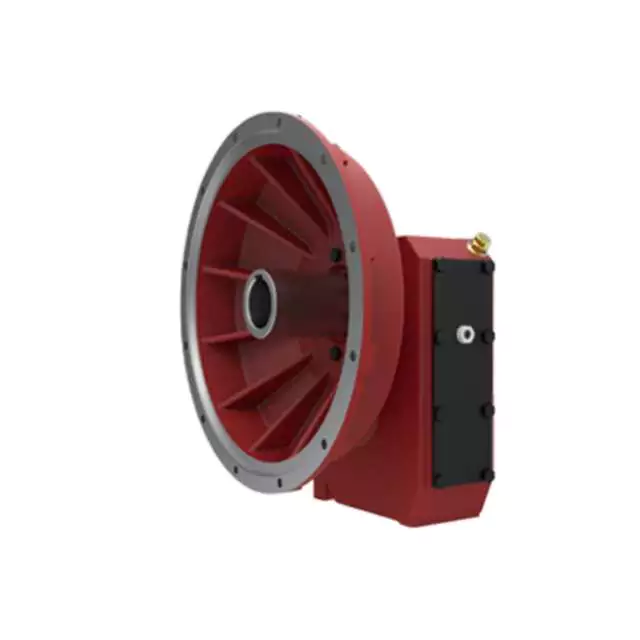
Using Agricultural Gearboxes in Specialized Tasks: Tilling and Planting
Agricultural gearboxes are versatile components that play a crucial role in various farming operations, including specialized tasks such as tilling and planting. Here’s how agricultural gearboxes are utilized in these tasks:
- Tilling: Tilling is an essential step in preparing the soil for planting. Agricultural gearboxes are used in tractor-mounted tillers to drive the rotating tines that break up and turn over the soil. The gearbox’s high torque capabilities and power transmission efficiency allow the tiller to work effectively even in tough soil conditions. Adjustable gear ratios in the gearbox enable operators to control the tiller’s speed and penetration depth, optimizing soil preparation.
- Planting: Precision planting requires accurate seed placement and spacing to maximize crop yield. Agricultural gearboxes are integrated into planting equipment to drive mechanisms that distribute seeds evenly at the desired depth. The gearbox’s ability to transmit power with precision ensures consistent seed placement, contributing to uniform germination and plant growth. Some gearboxes in planting equipment also offer variable speed options, allowing farmers to adjust planting rates based on seed types and field conditions.
By enabling efficient power transmission and offering customizable speed and torque settings, agricultural gearboxes enhance the effectiveness of specialized tasks like tilling and planting. Farmers can rely on these gearboxes to achieve optimal soil preparation and planting accuracy, ultimately contributing to higher crop yields.
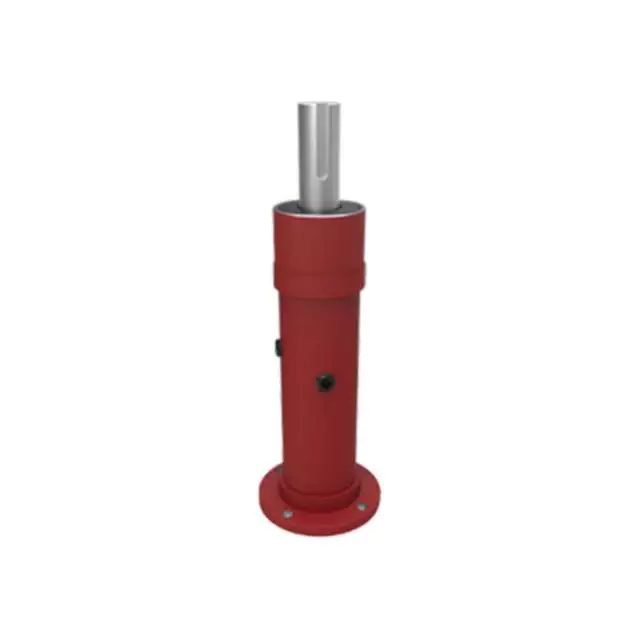
Factors to Consider When Selecting the Right Gearbox for Farm Machinery
Choosing the appropriate gearbox for farm machinery is crucial to ensure optimal performance and efficiency. Here are the key factors to consider when selecting the right gearbox:
- Power and Torque Requirements: Assess the power and torque needed for the specific task the machinery will perform. Select a gearbox that can handle the required load without straining the components.
- Speed Variation: Determine if the machinery requires variable speed control for different tasks. Some gearboxes offer adjustable speed options to match varying conditions and applications.
- Task Compatibility: Ensure that the chosen gearbox is compatible with the implements and attachments the machinery will use. Different tasks may require different gear ratios and torque capabilities.
- Efficiency: Opt for gearboxes known for their efficiency in power transmission. Efficient gearboxes minimize energy losses and maximize the output of the machinery.
- Durability: Farming environments can be demanding, so select a gearbox that is built to withstand the conditions, such as exposure to dirt, moisture, and impacts.
- Size and Weight: Consider the available space and weight limits on the machinery. Choose a gearbox that fits within these constraints without compromising performance.
- Maintenance: Evaluate the maintenance requirements of the gearbox. Gearboxes that are easy to maintain and service can minimize downtime and keep the machinery running smoothly.
- Cost: Balance the initial cost of the gearbox with its long-term benefits and performance. Investing in a quality gearbox can lead to better overall cost-effectiveness over time.
- Compatibility: Ensure that the gearbox is compatible with the power source (such as the tractor’s power take-off) and other components of the machinery.
- Manufacturer Reputation: Choose gearboxes from reputable manufacturers with a history of producing reliable and high-quality agricultural machinery components.
By carefully considering these factors, farmers can select the right gearbox that meets the specific needs of their farm machinery, leading to enhanced efficiency, productivity, and longevity of equipment.
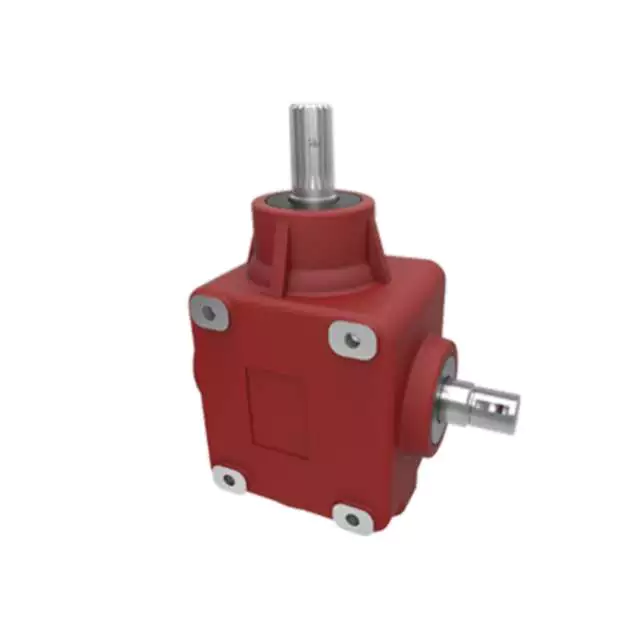
Key Features of a Durable and Reliable Agricultural Gearbox
A durable and reliable agricultural gearbox is crucial for the efficient operation of farming equipment and machinery. The following key features contribute to the durability and reliability of agricultural gearboxes:
- High-Quality Materials: Agricultural gearboxes are often exposed to harsh conditions, including dust, debris, and varying weather. Using high-quality materials, such as strong alloy steels, can enhance the gearbox’s resistance to wear, corrosion, and other forms of deterioration.
- Rugged Construction: The gearbox should have a robust and rugged construction to withstand the stresses and strains associated with agricultural tasks. Reinforced housings, precision machining, and robust seals can help prevent damage and ensure longevity.
- Effective Lubrication System: Proper lubrication is vital to reduce friction, dissipate heat, and prevent premature wear. Agricultural gearboxes should be equipped with efficient lubrication systems that ensure all components are adequately lubricated, even during extended operation.
- Sealing and Protection: Dust, dirt, and moisture are common challenges in agricultural environments. Effective sealing mechanisms, such as gaskets and seals, prevent contaminants from entering the gearbox and protect internal components from damage.
- Heat Dissipation: The gearbox should be designed to dissipate heat effectively, especially during prolonged operation. Overheating can lead to lubrication breakdown and premature wear. Cooling fins and adequate ventilation can help maintain optimal operating temperatures.
- Gear Quality and Precision: High-quality gears with accurate tooth profiles and precision manufacturing ensure smooth and efficient power transmission. Properly machined gears reduce noise, vibration, and the risk of gear failures.
- Advanced Gear Design: Some agricultural gearboxes may feature advanced gear designs, such as helical or planetary gears. These designs offer improved efficiency, reduced noise, and increased load-bearing capacity compared to traditional spur gears.
- Overload Protection: Incorporating overload protection mechanisms, such as shear pins or clutch systems, can prevent damage to the gearbox and other connected components in case of sudden high loads or jams.
- Easy Maintenance Access: The gearbox should be designed with maintenance in mind. Accessible inspection points, drain plugs, and fill ports make it easier for operators to perform routine maintenance tasks.
Manufacturers often engineer agricultural gearboxes to meet these requirements, ensuring that they can withstand the demanding conditions of farming operations and contribute to the reliable performance of agricultural machinery.


editor by CX 2023-11-16